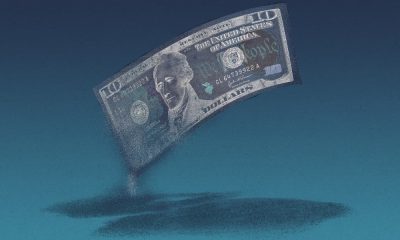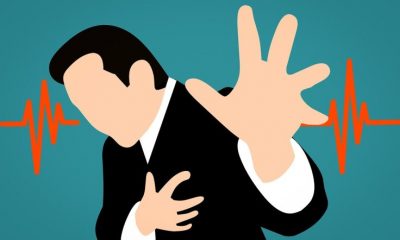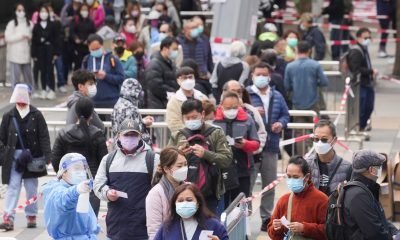The revised guidelines on when and when not to wear masks came as a surprise to many Americans. The Centers for Disease Control and Prevention announced May 13, 2021, that people who are fully vaccinated against COVID-19 can safely enter many indoor settings, such as grocery stores and restaurants, without wearing a mask.
The CDC’s updated guidelines also ask that unvaccinated or partially vaccinated people continue to wear a mask – even in establishments like bars and restaurants, where doing so may no longer be required.
There is good reason to suspect that at least some unvaccinated Americans may violate the CDC’s recommended “honor system” approach. Although the number of Americans who have been vaccinated or plan to be vaccinated against COVID-19 has increased in recent months, many Americans – 34%, according to a recent Kaiser Family Foundation survey – are either on the fence about vaccinating (15%), will vaccinate only if required to do so (6%) or plan to forgo vaccinating altogether (13%).
My colleagues and I conducted research that suggests that many people who plan to refuse a vaccine hold negative views toward scientists and medical experts. Consequently, it seems plausible that unvaccinated people may be unwilling to heed the advice of public health experts at the CDC.
So an important question arises, especially as Memorial Day approaches and people want to be out and about: Can fully vaccinated Americans trust unvaccinated people to wear a mask, even when not required to do so? In a new, demographically representative survey, I find that the answer may be no.
The virus could mutate among unvaccinated people
The logic behind the decision, according to the CDC, is that the Pfizer, Moderna and Johnson & Johnson vaccines are effective enough to substantially reduce the likelihood of vaccinated people contracting COVID-19, developing symptoms or spreading the disease to others. This likely means that potentially infectious unvaccinated people pose only a minimal threat to the vaccinated people with whom they come in contact.
There are now comparatively low levels of community spread across much of the U.S. And, as of May 24, over 38% of Americans were fully immunized against COVID-19 via vaccination. As a result, this recent CDC guidance may not interfere with declining virus transmission rates across the country.
The decision, however, has nevertheless raised questions about whether vaccinated Americans can trust unvaccinated people to follow the CDC’s updated guidelines. As CDC director Rochelle Walensky put it, unvaccinated people must be “honest with themselves” about the protective health benefits of wearing a mask.
One concern about the so-called “honor system” approach is that it may allow the virus to circulate among unvaccinated people – a point raised by a major nurses union. If true, increased circulation could enable the virus to continue to mutate. This could potentially lead to the development of variants that are at least partially resistant to existing COVID-19 vaccines.
Assessing mask-wearing intentions and vaccination status
I studied Americans’ vaccination and mask-wearing intentions in a demographically representative survey of 478 adults in the U.S. on May 17. Respondents were recruited to participate in this study via Lucid Theorem, an online opt-in survey research service. It uses quota sampling to produce samples that reflect known census demographic benchmarks on age, race, educational attainment, household income, partisan identification and census region.
I corrected for any remaining deviations between the sample and U.S. adult population by applying survey weights that adjust for respondents’ age, race, educational attainment and household income.
I first asked respondents to report whether they were “fully vaccinated against COVID-19” or “partially vaccinated against COVID-19,” or if they had “not received a COVID-19 vaccine.” Respondents could report that they were “fully vaccinated – that is, received two doses of Pfizer/Moderna or one of Johnson & Johnson” or “partially vaccinated – meaning that they received one dose of Pfizer/Moderna”; that they have “not received a COVID-19 vaccine, but plan to”; or that they have “not received a COVID-19 vaccine, and do not plan to.”
As some respondents may not have been aware of the updated CDC guidelines, I next briefly summarized the CDC’s revised recommendations.
Finally, I asked respondents whether they “plan to wear a mask in indoor settings like stores and restaurants, even when not required to do so.” Respondents could answer this question by saying “Yes, I plan to wear a mask” or “No, I do not plan to wear a mask.”
Many unvaccinated people may ignore CDC guidelines
About 1 in 5, or 21%, reported that they had not received a COVID-19 vaccine and do not plan to do so. In addition, more than one-quarter (26%) of that 21%, equivalent to about 5% of the total set of respondents, also said that they plan to not wear a mask in indoor spaces like stores and restaurants.
On the other hand, of the 48% who reported being fully vaccinated, a smaller percentage, or 19%, plan to not wear a mask indoors. This means that the proportion of unvaccinated people in my sample who plan to not wear masks indoors is higher than the proportion of vaccinated people who plan to do the same.
Fully vaccinated people may choose to continue to wear a mask indoors because they don’t trust unvaccinated people to follow CDC guidelines. I find that a slim majority – 54% – of fully vaccinated respondents report that they trust unvaccinated people either “a little” or “not at all” to wear masks in indoor environments. Even though nearly 4 in 5 – or 79% – of fully vaccinated people report that they trust the CDC to “do what is right,” uncertainty about what unvaccinated people choose to do may outweigh those considerations.
A potential mismatch between expectations and reality
The idea that many unvaccinated people may choose to not wear masks in public indoor spaces does not necessarily have negative public health consequences. It could be the case that current COVID-19 transmission rates, vaccine uptake and population immunity to the virus are sufficiently high to stave off another wave of infections. As a social scientist, I prefer to leave that question up to epidemiologists and public health professionals.
[The Conversation’s most important coronavirus headlines, weekly in a science newsletter]
However, I believe my research documents an important asymmetry between the CDC’s revised recommendations and what unvaccinated people actually plan to do. Because some Americans who have no plans to vaccinate against COVID-19 report that they may ignore CDC guidelines regarding mask-wearing in indoor spaces, other Americans may be right to harbor some amount of skepticism about whether or not the “honor system” approach is likely to produce compliance.
Of course, I caution that these survey responses are based entirely on self-reported data. It could be the case that people who self-report planning to vaccinate or wear masks, or both, do not actually do so in their daily lives. If true, this may actually strengthen the case for vaccinated Americans to hold some amount of skepticism toward unvaccinated people, as I may be underestimating the extent to which unvaccinated people plan to skirt CDC guidelines.
An “honor system” approach to mask-wearing may not ultimately prolong the pandemic. But Americans may be right to doubt whether or not unvaccinated people follow CDC recommendations.
Matt Motta, Assistant Professor of Political Science, Oklahoma State University
This article is republished from The Conversation under a Creative Commons license. Read the original article.
















